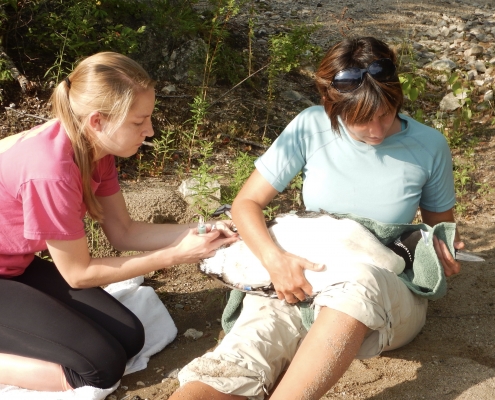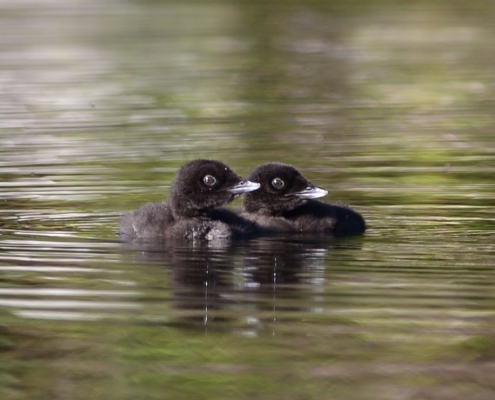LPC staff and a large grassroots network of over 1,500 members and volunteers work to:
- Monitor the number and breeding success of loons to identify population trends and areas of concern
- Band and track loons to study their life history
- Rescue sick or injured loons to be rehabilitated and released
- Recover dead loons and non-viable eggs to determine contaminant levels and causes of death
- Digitally map loon nesting and nursery sites to identify and protect critical habitat
- Build and float nesting rafts
- Float signs and rope lines to protect nesting loons
- Educate the public about loons through exhibits, presentations to schools and other groups, summer programs, signs, our website, and The Loon Center in Moultonborough
- Implement all of the above as part of a comprehensive Loon Recovery Plan to ensure the long-term viability of New Hampshire’s loon population.
LPC was the first organized effort to study and work toward the preservation of loons in North America. Since its inception, LPC has created the most complete and longest-running database of loon populations and productivity that exists anywhere in the world, and conducted the most comprehensive research ever undertaken on contaminants and other challenges facing loons.
The Loon Preservation Committee was one of the first organizations anywhere to show that coordinated and thoughtful human actions could reverse the decline of a threatened or endangered species. Our success has inspired the creation of state-wide, regional and even international organizations to preserve loons, and our efforts continue to benefit other species that depend on clean water, natural shorelines and functioning ecosystems.




